ROY LICHTENSTEIN (1923-1997)


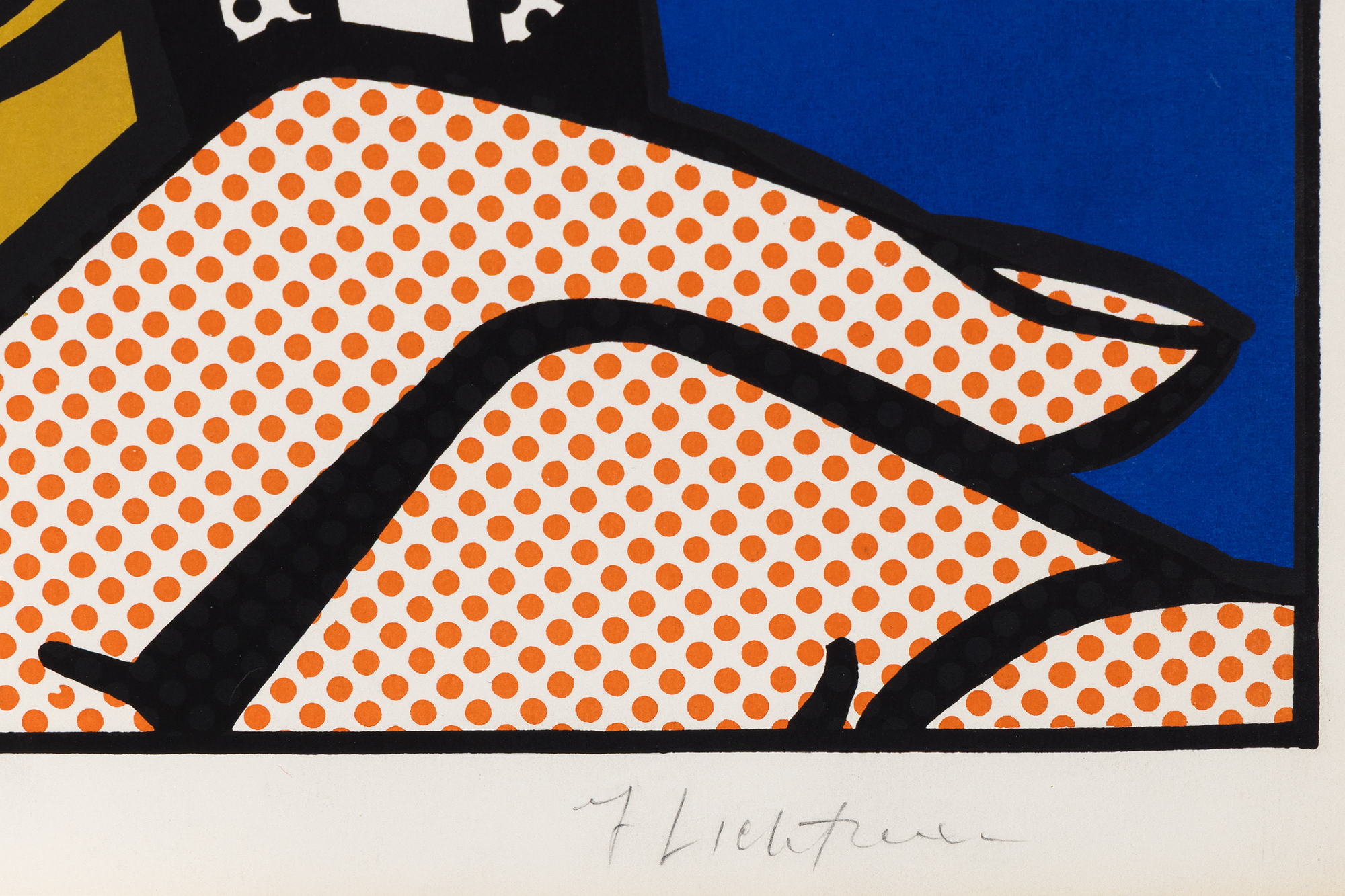

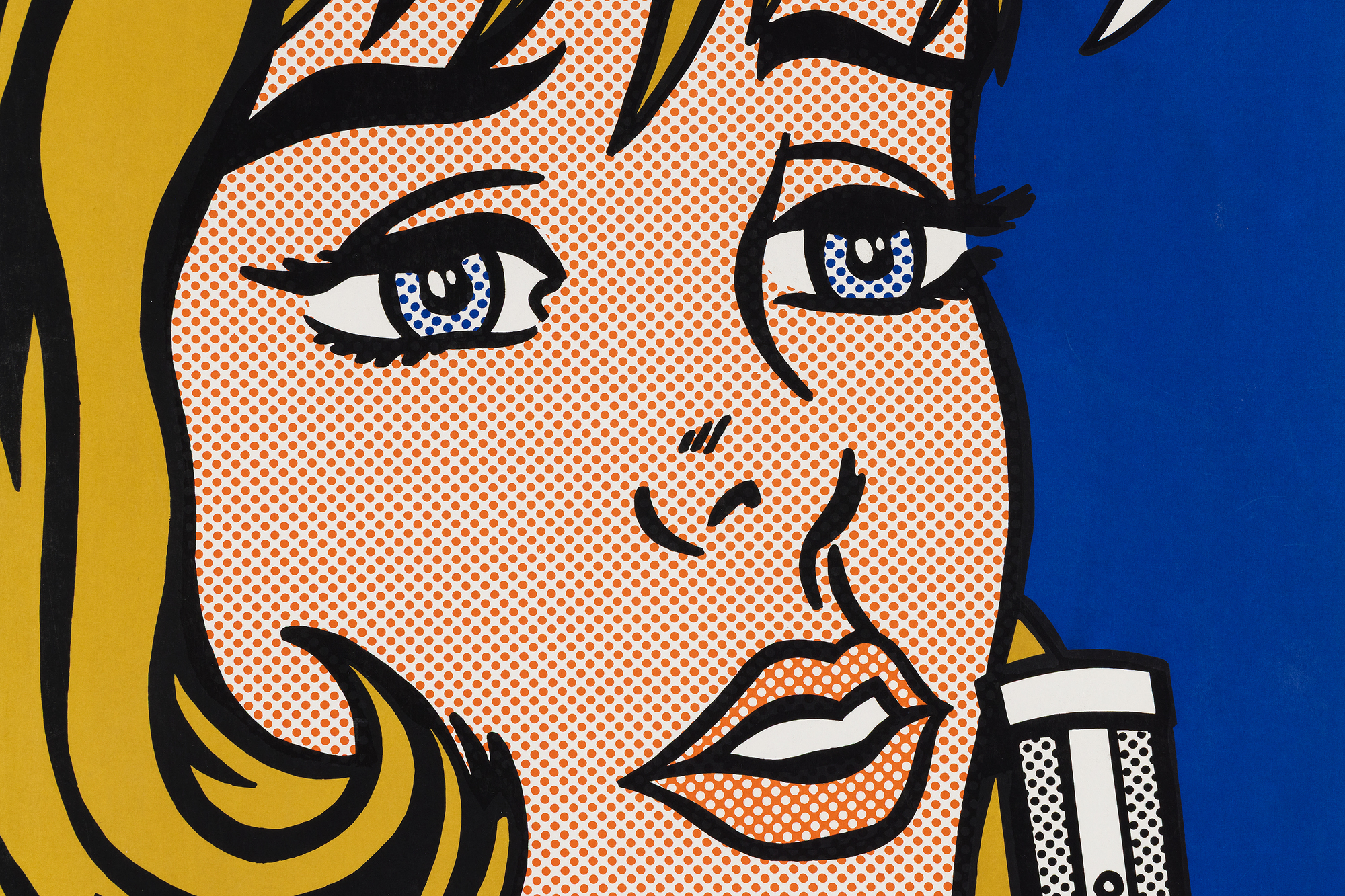
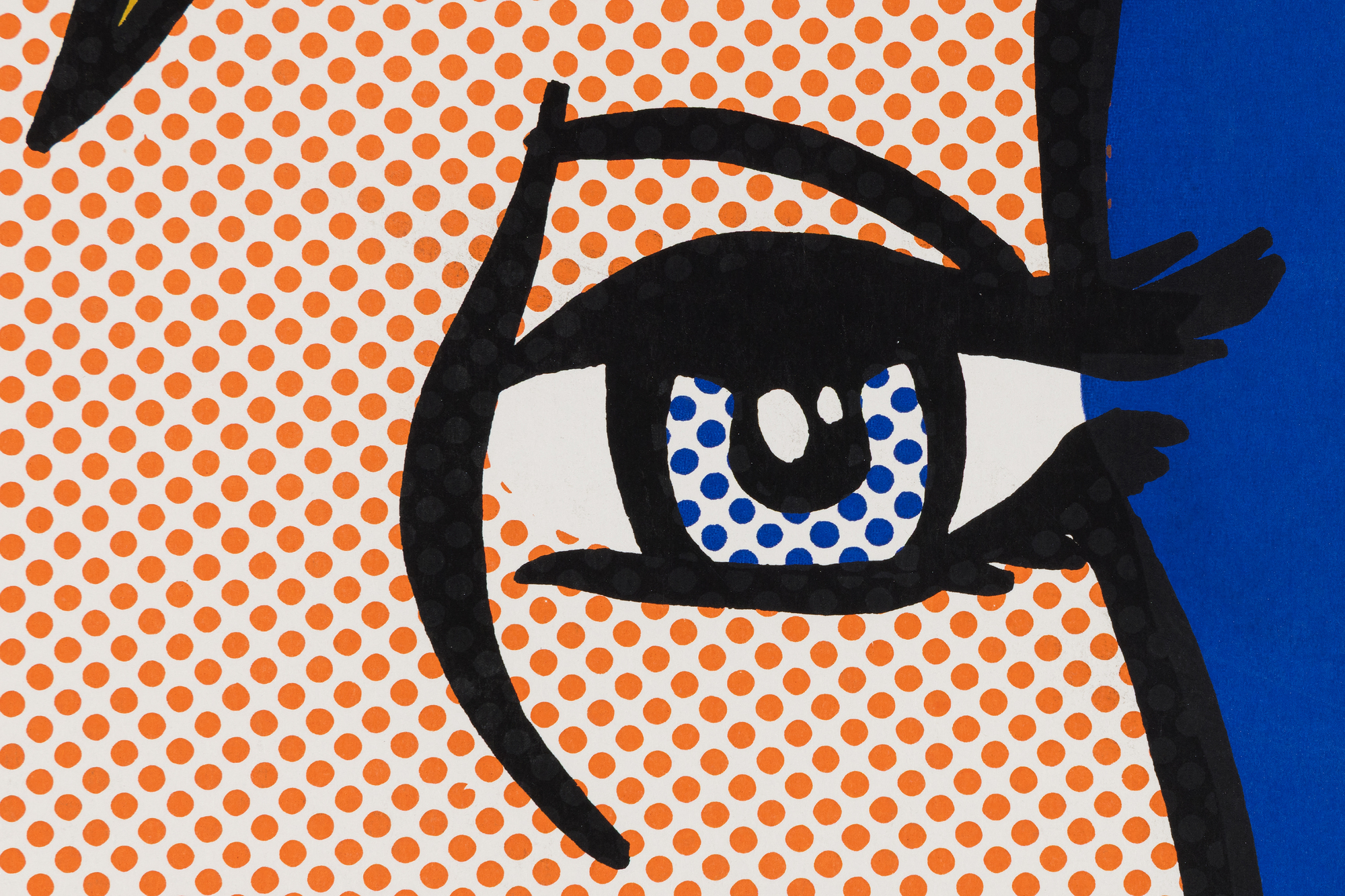
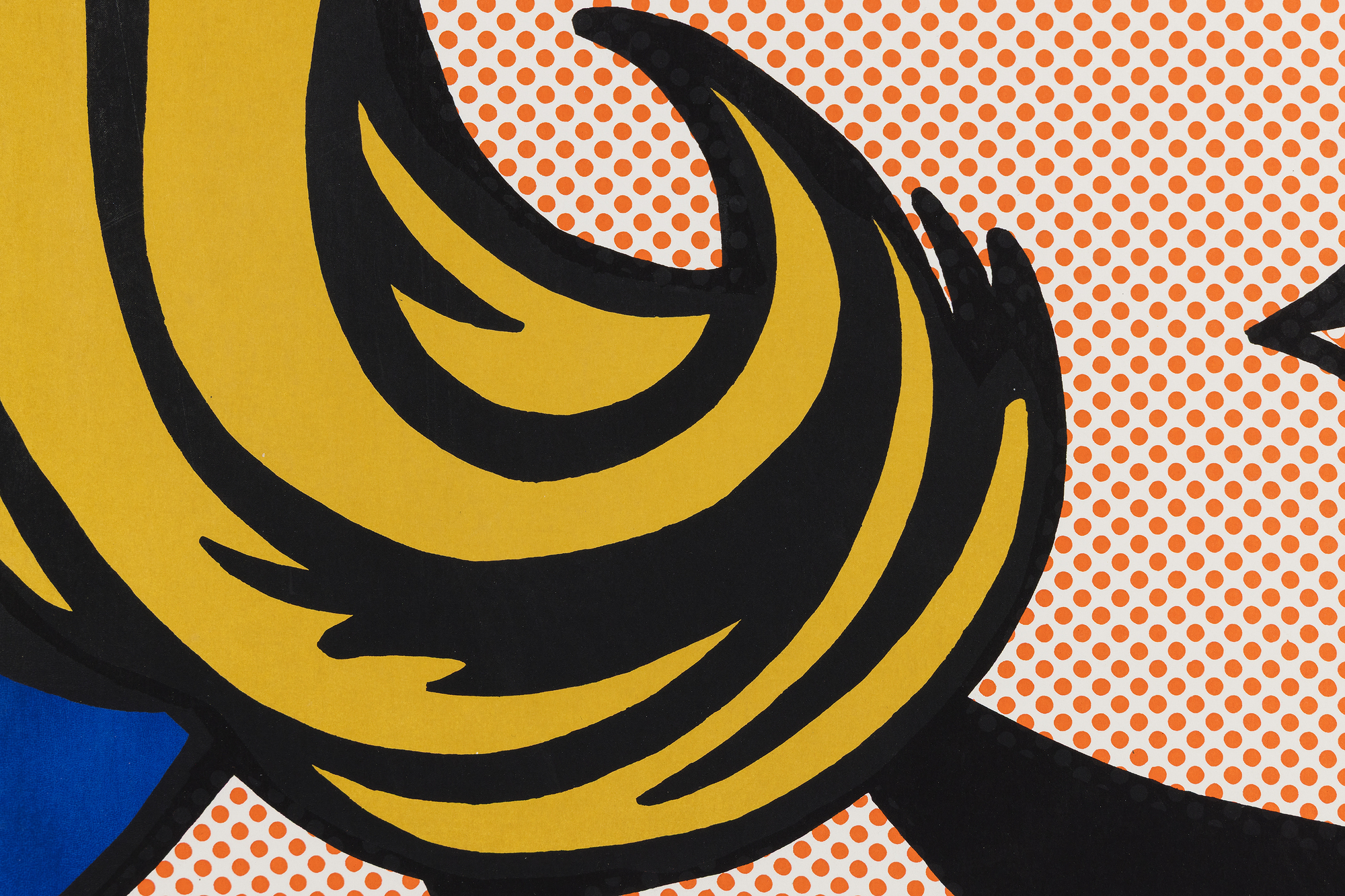

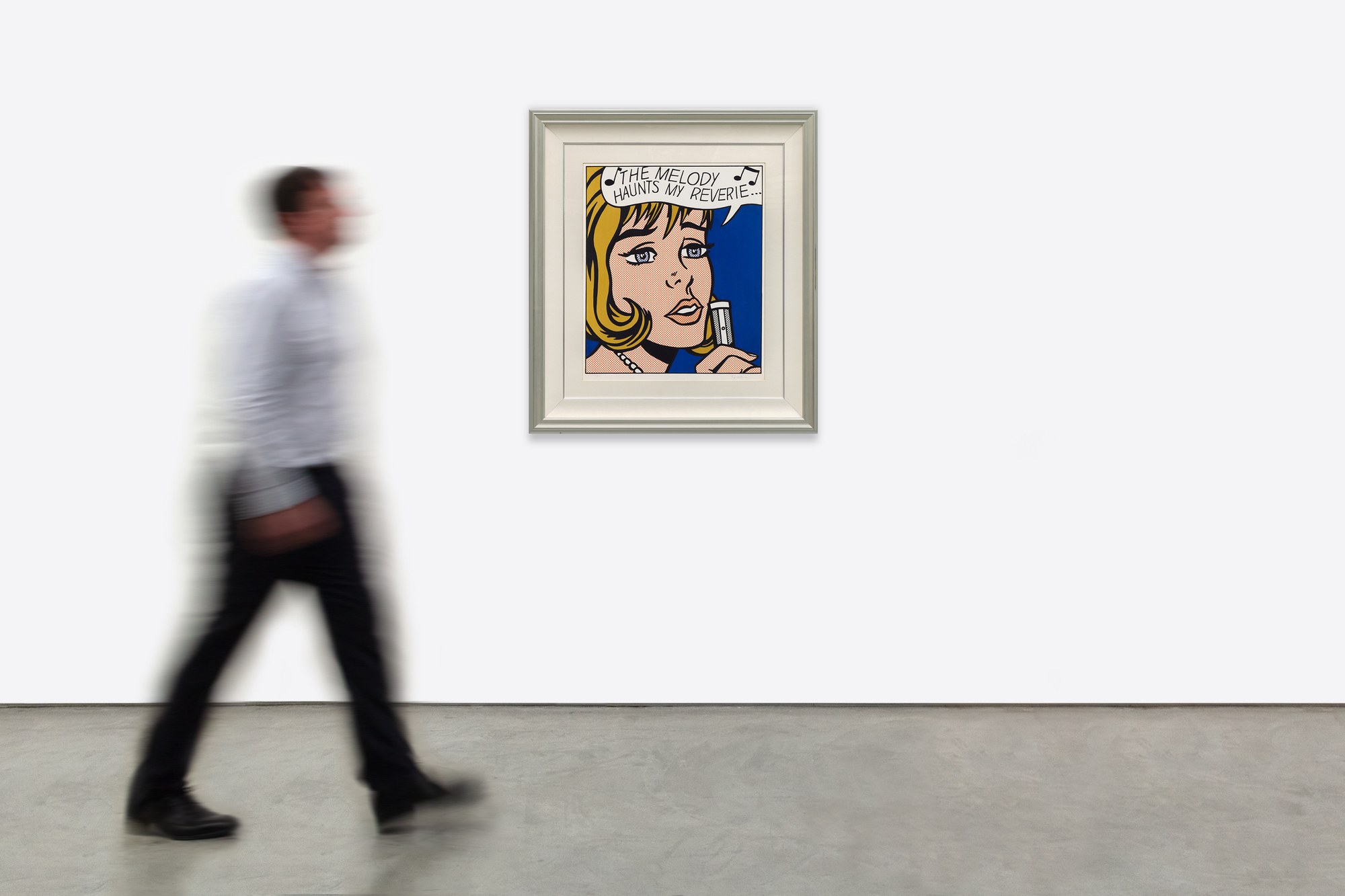
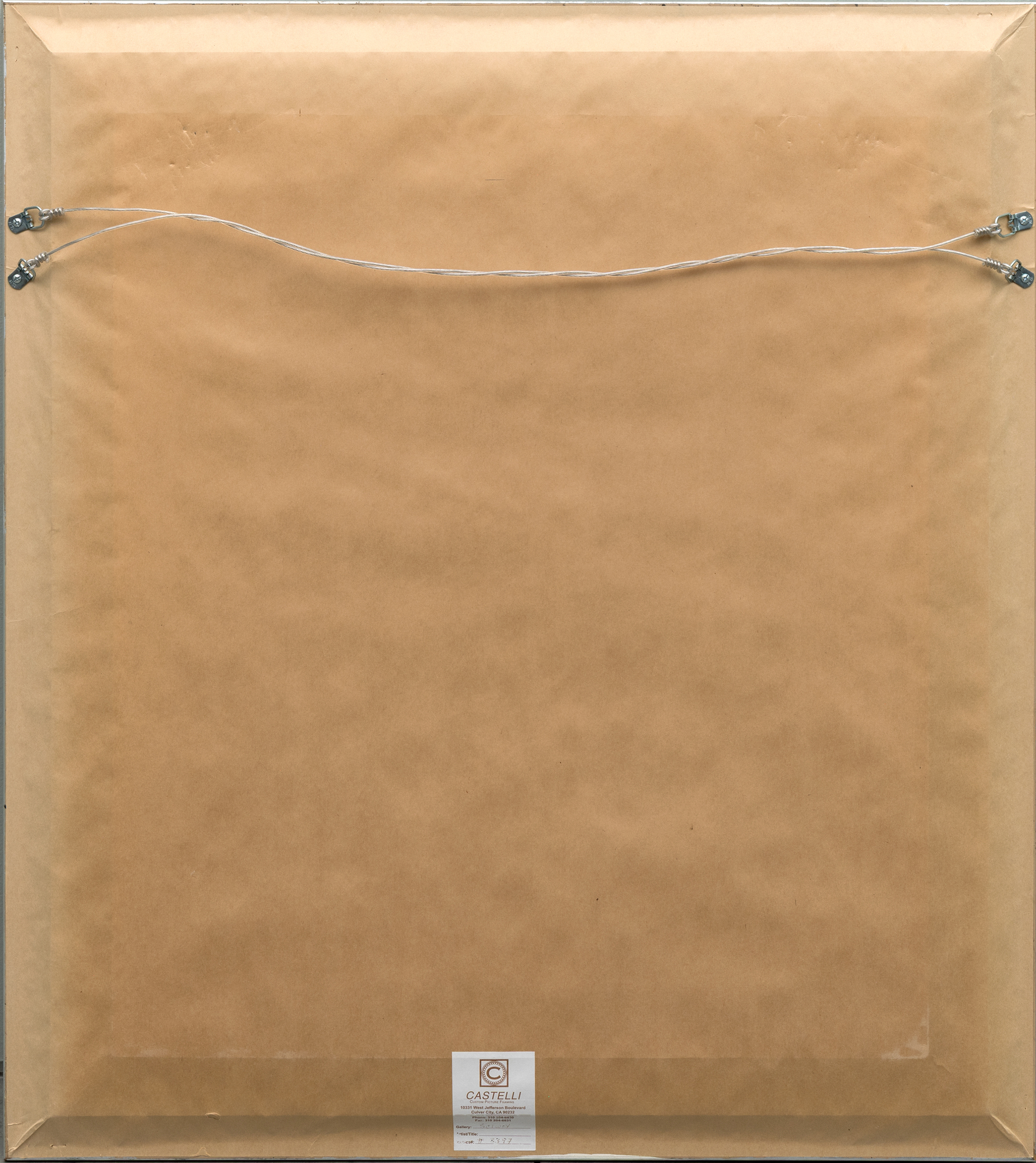
Provenance
Hamilton SelwayCollection privée
Littérature
Paul Bianchini, ed. Roy Lichtenstein : Drawings and Prints, Lausanne, 1970, no. 10, p. 220 (illustré en noir et blanc)Mary Lee Corlett, The Prints of Roy Lichtenstein : A Catalogue Raisonné, 1948-1993, 2e édition, New York et Washington, D.C., 2002, no. 38
Andrea Theil et Roy Lichtenstein Foundation, Roy Lichtenstein : A Catalogue Raisonné, New York, lichtensteincatalogue.org, no. 1132
195,000
Reverie dépeint une héroïne pensive et stylisée, rendue avec les points Ben-Day, les contours audacieux et les couleurs primaires caractéristiques de Lichtenstein, capturant à la fois le mélodrame et la retenue des récits de bandes dessinées. Le titre rappelle la chanson nostalgique Stardust de Hoagie Carmichael (1927), en particulier le vers "The melody haunts my reverie" (la mélodie hante ma rêverie), soulignant l'humeur nostalgique véhiculée par le regard lointain du modèle. Lichtenstein lui-même considérait ses contributions à 11 Pop Artists comme ses premières véritables gravures d'art, l'aboutissement d'années de maîtrise de multiples techniques d'impression, de l'eau-forte à la sérigraphie.
Les impressions de cette édition sont aujourd'hui conservées dans de grandes collections publiques, dont l'Art Institute of Chicago, la National Gallery of Art, le Museum of Modern Art et le Smithsonian American Art Museum, affirmant ainsi son importance historique et artistique.


